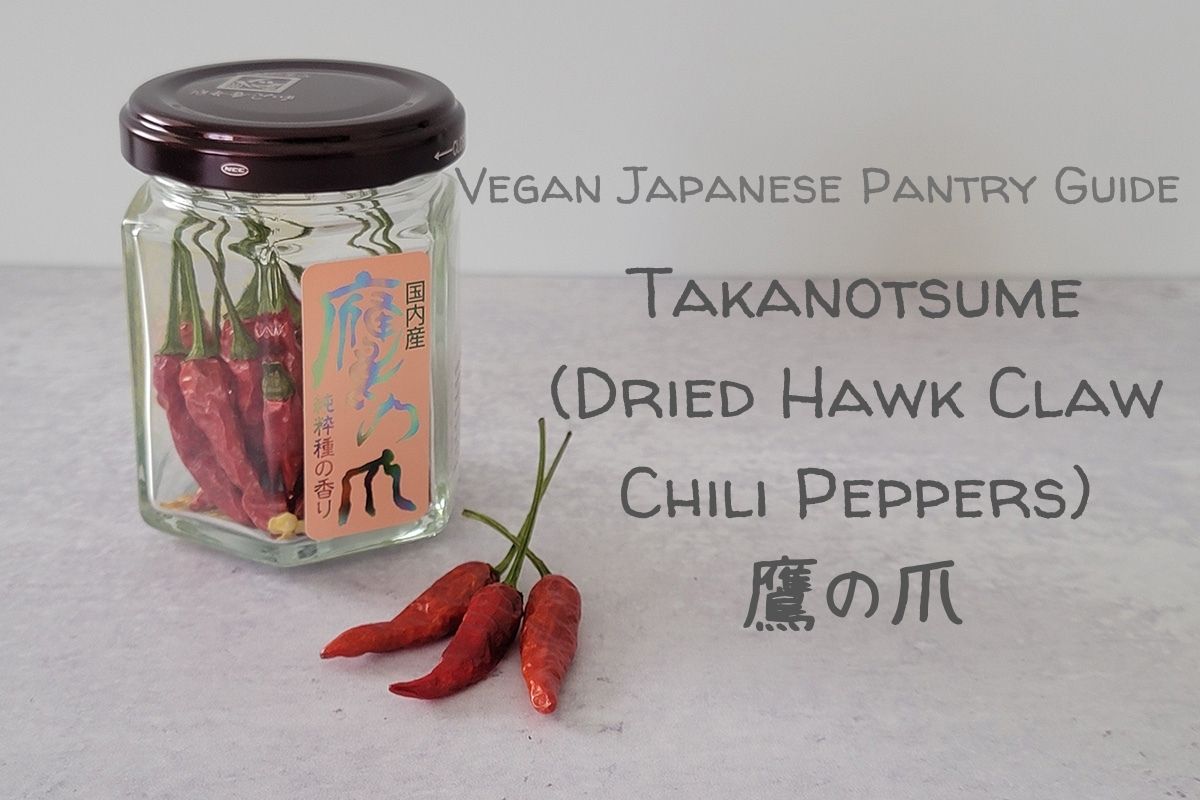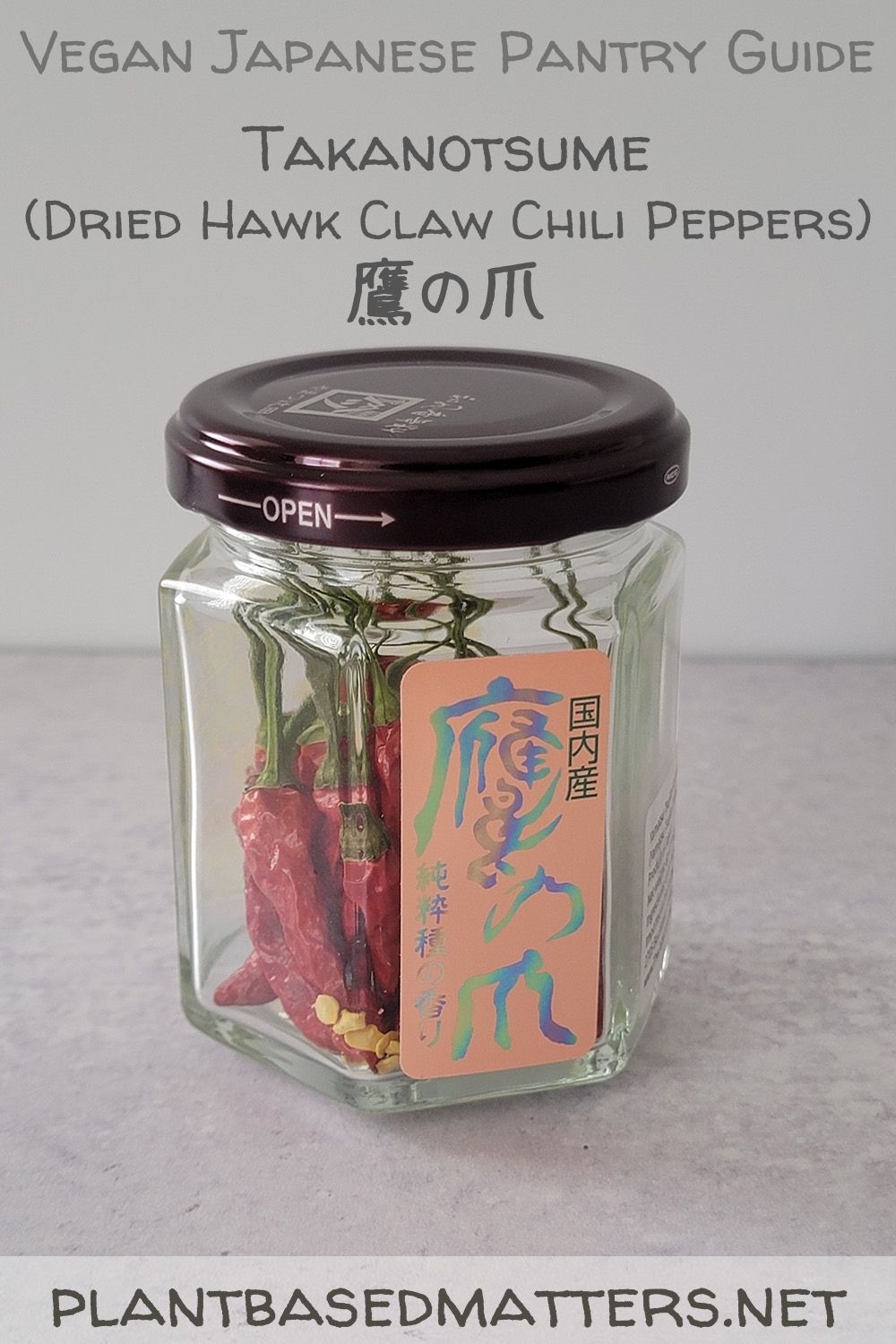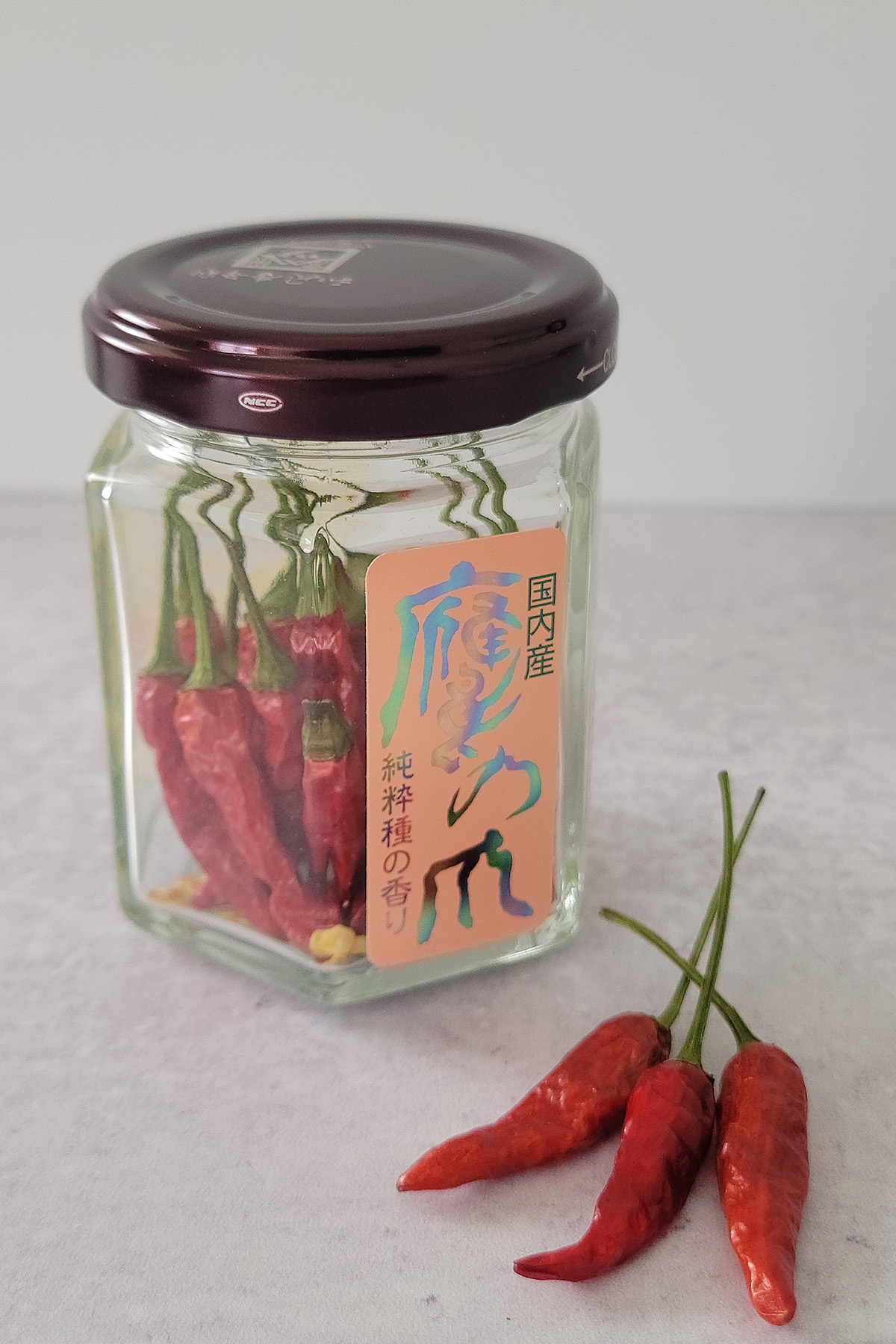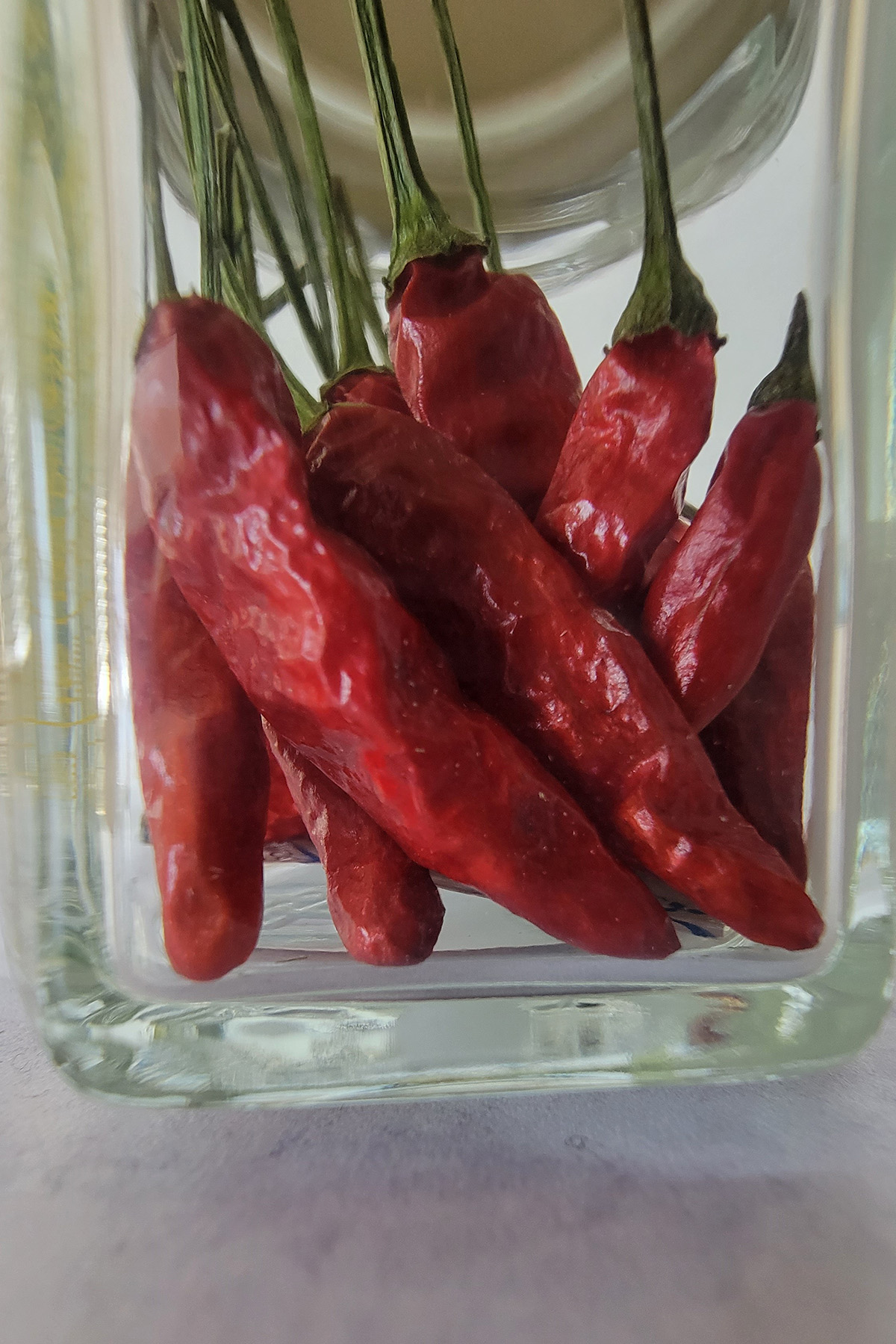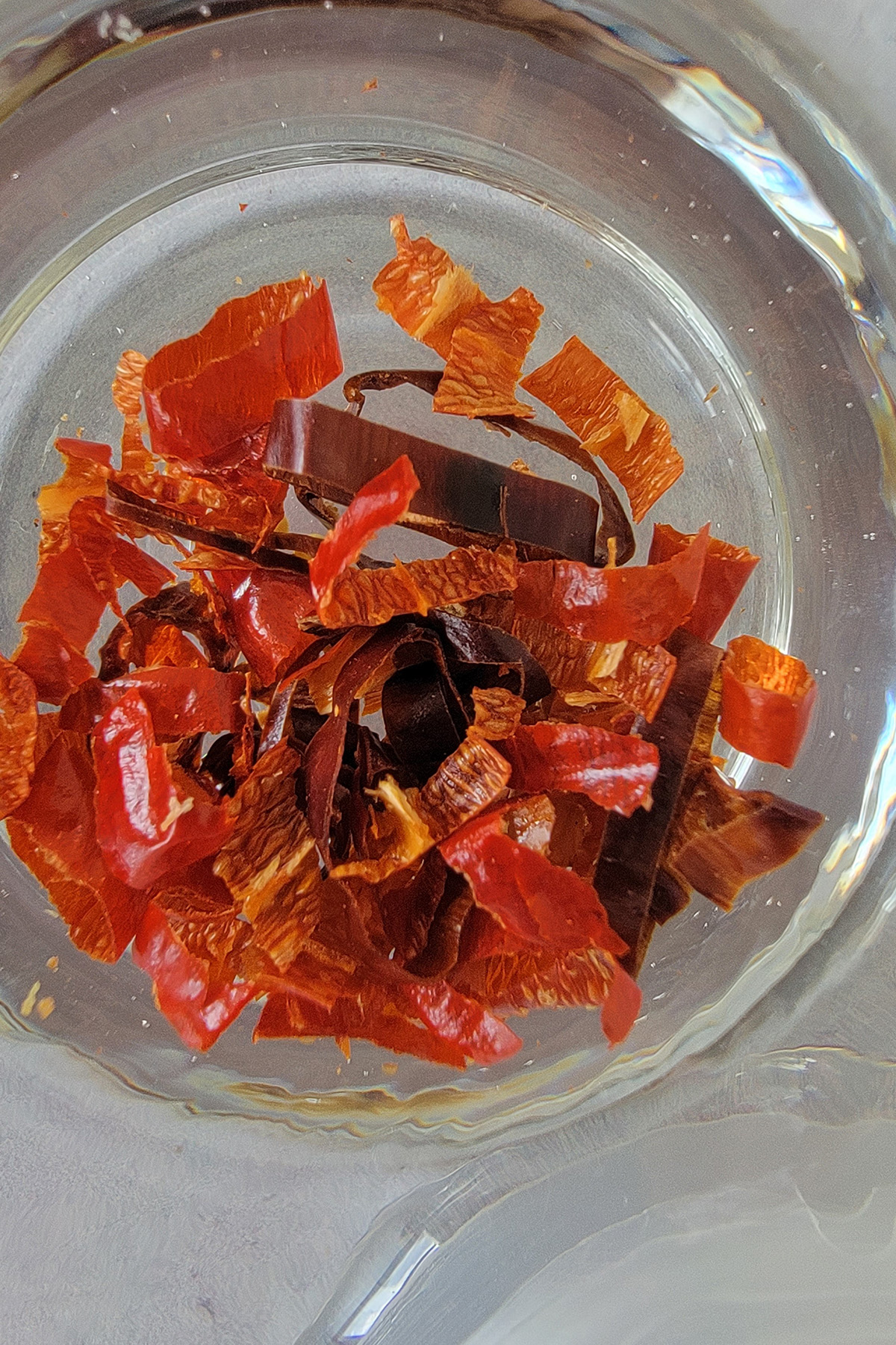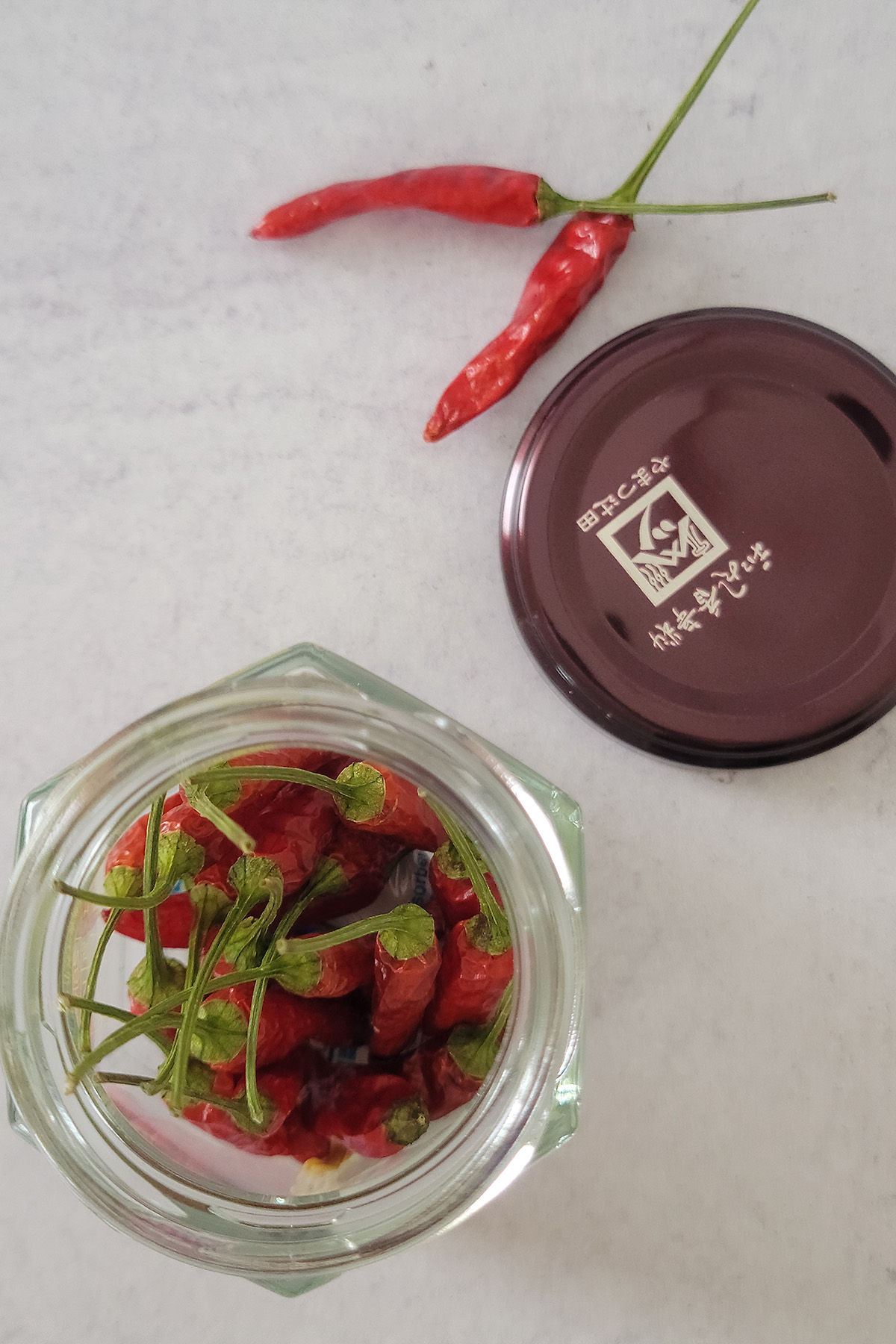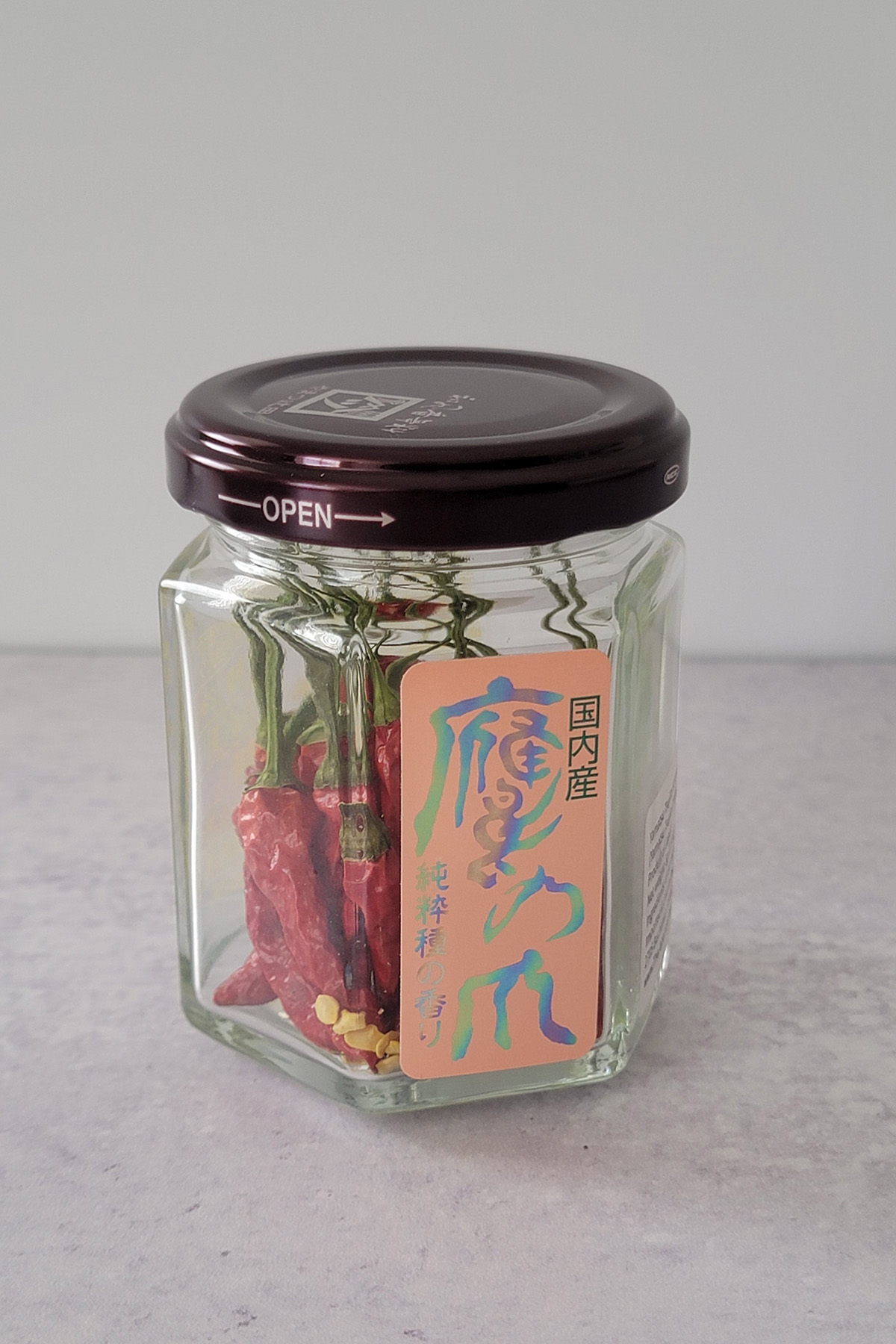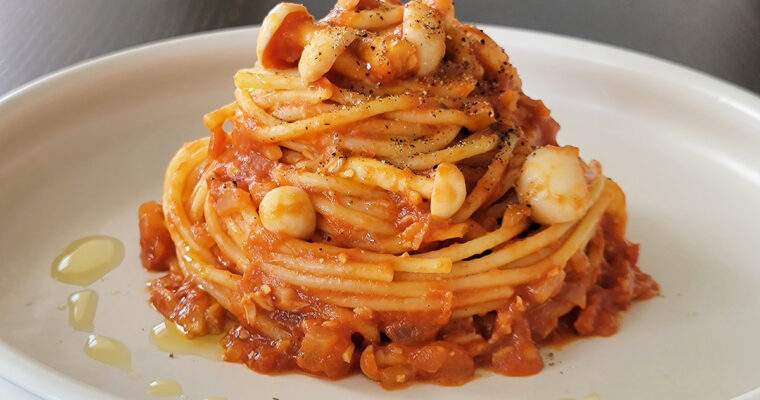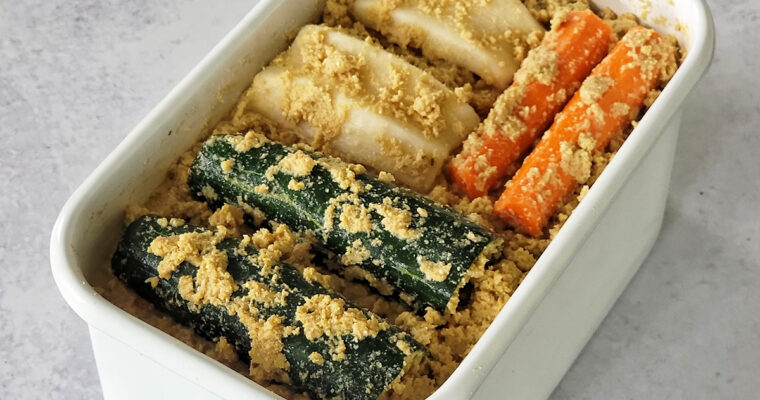Last Updated on April 5, 2022
Takanotsume (Dried Hawk Claw Chili Peppers) is a type of hot & spicy chili pepper commonly used in Japanese cooking. Although Japanese cuisine isn’t really known for spicy food, the hawk claw chili peppers (takanotsume) can be seen as one of the ingredients for spicy dishes such as mabo-dofu and tan-tan men. Using takanotsume pepper is a great way to spice up your vegan Japanese recipes to make them taste more authentic! If you like spicy food, it’s an essential item for your vegan Japanese pantry.
What’s Takanotsume (Dried Hawk Claw Chili Peppers)?
Overview
Hawk claw chili peppers are known as takanotsume [鷹の爪] which literally means hawk’s [鷹の] + claw [爪] in Japanese.
The size of takanotsume pepper is relatively small. However, they are very spicy despite of the cute and tiny appearance. As the name says it all, the name “takanotsume” comes from the appearance of the pepper which look similar to the size and its shape of a hawk’s claw.
Note: In this post, I use the words “hawk claw chili pepper” and “takanotsume” interchangeably.
Of course, there are more variety of hot peppers around the world that are way spicier than the hawk claw chili peppers. However, based on the fact that spiciness isn’t really a common element for Japanese food, takanotsume could be considered one of the spiciest ingredients in Japanese cooking in general.
Typically, takanotsume are sold dried and either as a whole or thinly cut round slices.
Trivia
If you love Japanese food, I’m pretty sure that you’ve used or heard of shichimi pepper [七味唐辛子] or Japanese 7-spice blend. Actually, hawk claw chili pepper is one of the main ingredients of shichimi pepper that provides the heat.
Now, this one may not be as widely known as the shichimi pepper but there is another Japanese spice product called ichimi pepper [一味唐辛子.] Unlike shichimi pepper, ichimi pepper contains only powder or flakes of dried hawk claw chili peppers.
They both are great condiments for udon noodles and soba noodles.
Ways to Use Takanotsume
Ideas
Here are some example of Japanese dishes that you can make with takanotsume (dried hawk claw chili peppers.)
- Mabo-dofu (Japanese version of mapo tofu)
- Tan-tan men (Japanese version of dan dan noodles)
- Garlic & oil pasta or spaghetti aglio e olio
- Nukadoko (for making Japanese pickles, nukazuke)
Basically, if any Japanese recipes call for dried chili pepper flakes (when it doesn’t specify), try using takanotsume peppers! Similarly, if any non-Japanese recipes call for dried chili pepper flakes, substitute with takanotsume.
I use hawk claw chili peppers for everything from Japanese to Italian. I like just the right amount of heat the takanotsume gives.
Actually, dried takanotsume is also useful as a “natural” repellent for keeping milled rice bug-free. Just put a piece or two in a container that you store rice!
Whole Pepper
If you want to give spiciness to a dish without spreading the spicy bits of peppers, it’s better to cook the takanotsume as a whole. Then remove it at one point during the process of cooking. With this method, you can still taste the spiciness in the dish without actually biting into bits of the pepper.
For nukadoko, I also use as a whole. Lastly, whole dried takanotsume pepper can be used as a natural repellent for rice as mentioned above in the previous section.
Round Slices
The round slices are probably the most common form (or for sure my favorite way) of dried takanotsume peppers for cooking. All you need is a little bit to give a good amount of spiciness. For example, adding 1/4-1/2 tsp of takanotsume pepper will be plenty for making 2 servings of garlic & oil pasta.
In my opinion, the spiciness of takanotsume is more intense than typical red chili pepper flakes that you see in supermarkets in the US.
In Japan, you can easily find round sliced takanotsume pepper but you may not be able to find one easily in where you live. Good news is that you can buy whole takanotsume pepper and slice them at home using scissors!
How to Slice or Make Flakes
Tips: When you handle takanotsume peppers, you may want to put gloves on to avoid rubbing your eyes with peppery hands by accident!
- Cut off the stem/top off of takanotsume pepper with scissors.
- Remove the seeds as much as you can. To do so, simply put the pepper cut-side down and tap it gently inside a bowl or plate to catch the seeds.
- Use scissors to thinly slice the takanotsume pepper. It may not come out as a perfect slice but it’s totally ok!
- Remove and separate the remaining seeds. Discard the seeds.
- Transfer the pepper in an airtight container and store in a dark/cool place to avoid humidity.
How to Store
When you buy takanotsume pepper, it may come in a resealable zipper bag or a glass jar.
Either way, it’s best to keep it in an airtight container and store in a cool/dark place for the freshness and to retain the aroma as long as possible. Also, humidity will quickly spoil the pepper (mold may grow) so make your own judgement and protect your peppers to avoid those situations.
Where to Buy
So far, I’ve only found takanotsume (dried hawk claw chili peppers) on The Japanese Pantry. They sell whole takanotsume peppers. It comes in a tiny cute glass jar with a metal cap (no plastics!) They also carry a bulk size as well but for a home-cook like me, this tiny jar is plenty. Yes, it’s a product of Japan!
Takanotume (Whole Dried Chili Peppers) from The Japanese Pantry
I recommend “real” Japanese takanotsume (dried hawk claw chili peppers) for you to stock up your authentic vegan Japanese pantry. This is a general tip for shopping Japanese groceries or pantry items which is to get the products that labels as “Product of Japan” on the back of the package. Often times, what appears to be a “Japanese” product is actually produced in another country. Always check the label!
Let me know in the comment sections below if you have any questions or other recommendations!
